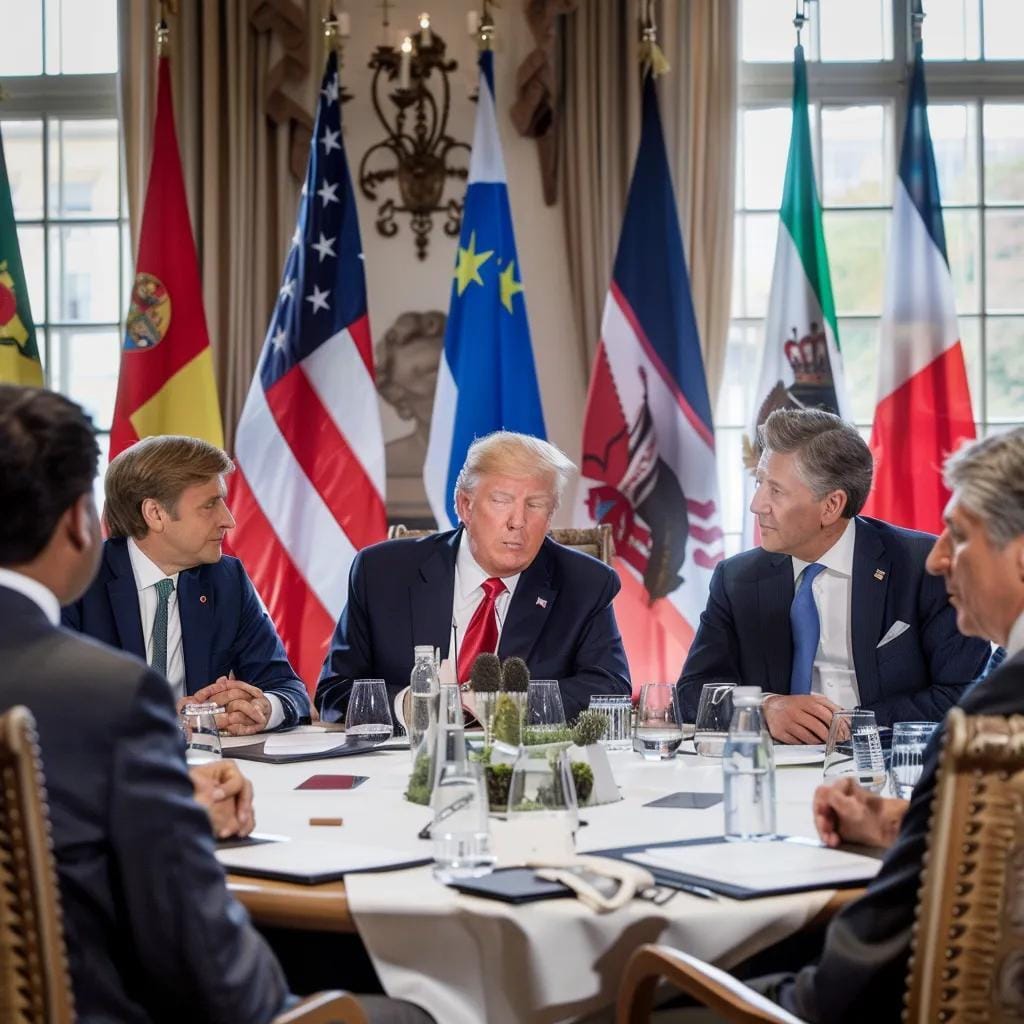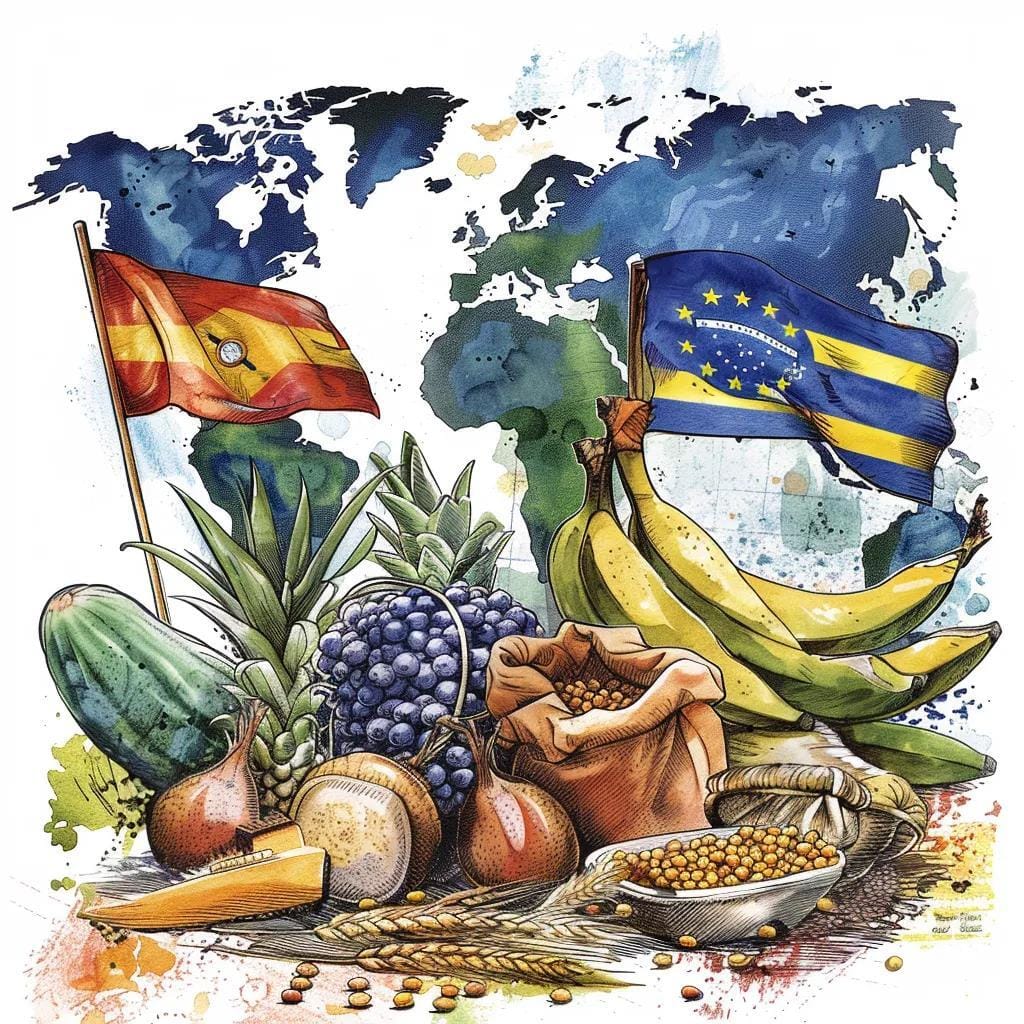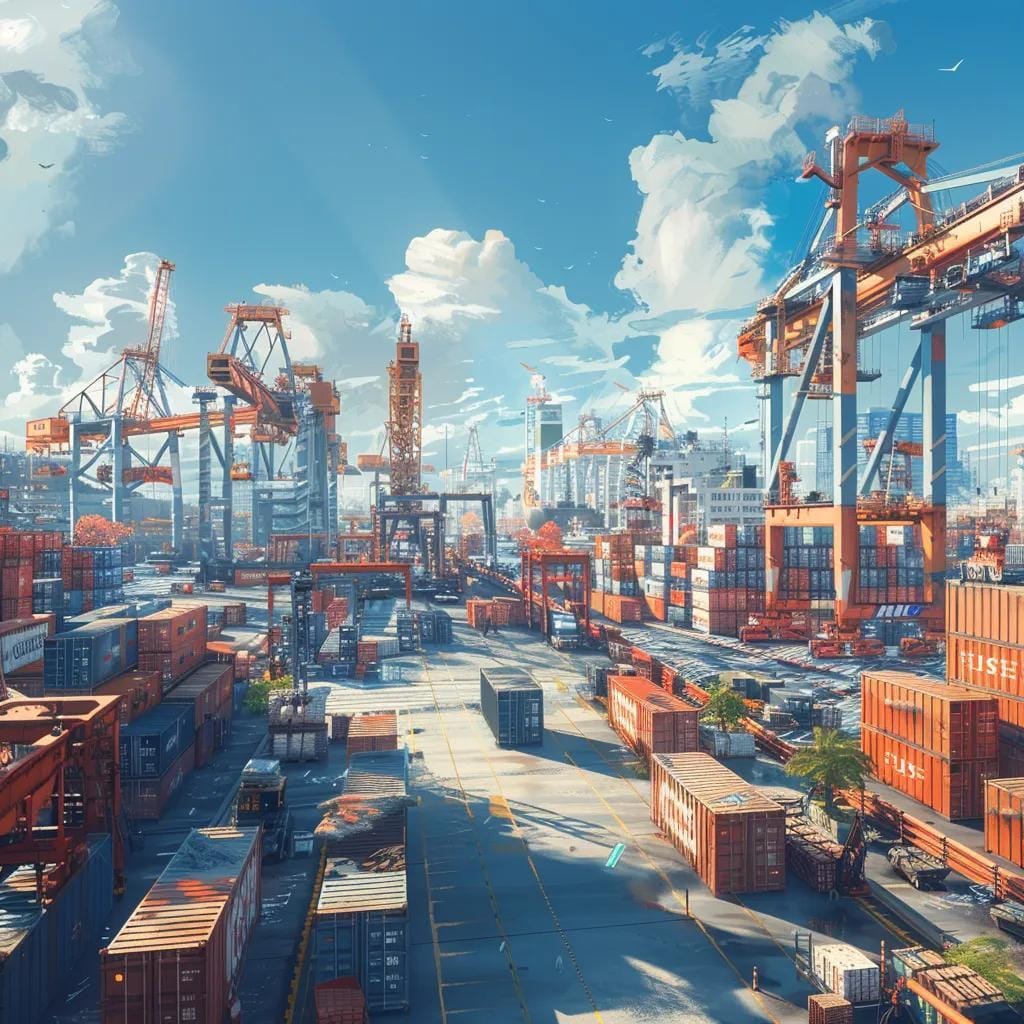In August 2025, President Donald Trump enacted a 50 percent levy on imported copper, triggering a seismic shift in global trade relations, fracturing the G7 alliance, and compelling the European Union to accelerate its pivot toward the Mercosur trade bloc. This unprecedented tariff represents a strategic protectionist measure designed to shield domestic industries but has instead deepened transatlantic rifts and catalyzed new geopolitical alignments. In this analysis, we examine the impact of Trump’s 50 percent metal levy, explore how it undermined G7 cohesion, unpack the EU’s strategic realignment with Mercosur, assess the broader economic and geopolitical fallout, evaluate the tariff’s influence on global copper markets and trade war dynamics, and project future scenarios emerging from this fracture. By mapping each facet of this trade upheaval, we reveal the interconnected forces reshaping international relations and commodity flows.
What Is the Impact of Trump’s 50% Metal Levy on Copper Imports?
How Does the 50% Copper Tariff Work, and What Does It Cover?
The 50 percent metal levy imposes an additional half-value tax on every metric ton of imported copper, raising the landed cost and incentivizing domestic smelting operations to capture a larger market share. This levy applies to refined cathode, copper wire, and semi-finished copper products, effectively narrowing the price gap between U.S. producers and overseas suppliers. By targeting primary copper forms at the port of entry, the tariff mechanism forces importers to absorb higher duties or pass costs downstream to manufacturers.
Below is a breakdown of the main copper categories subjected to the levy:
| Entity | Attribute | Value |
|---|---|---|
| Refined Cathode Copper | Tariff Rate | 50 percent |
| Copper Wire Rods | Tariff Rate | 50 percent |
| Semi-Finished Copper | Tariff Rate | 50 percent |
This classification clarifies how the tariff encompasses all core copper inputs, laying the groundwork for analyzing its broader economic rationale.
What Economic Reasons Did Trump Cite for Imposing the Metal Levy?
President Trump justified the 50 percent tariff with three primary economic arguments:
- He asserted that domestic copper miners were disadvantaged by cheaper foreign imports, undermining U.S. mine investment and jobs.
- He claimed that higher import duties would reduce trade deficits by discouraging reliance on overseas suppliers.
- He argued that protecting critical minerals was essential for national security and supply-chain resilience in strategic industries.
These reasons reflect an overarching goal to bolster American mining and manufacturing but risk retaliation that can offset domestic gains by harming exporters.
How Have Previous Metal Tariffs Influenced International Trade?
Historical metal tariffs provide context for Trump’s levy. In 2002, a 30 percent steel tariff triggered WTO disputes and prompted retaliatory duties from the EU and Japan. In 2018, U.S. aluminum and steel tariffs under Section 232 led to global supply chain realignments and bilateral trade frictions. Those precedents demonstrate that protectionist levies often spark tit-for-tat measures and accelerate diversification away from U.S. markets.
- 2002 Steel Tariffs → WTO challenges by the EU, Canada, and Mexico.
- 2018 Section 232 Levies → EU retaliatory duties on U.S. goods.
- 2020 Rare Earth Restrictions → China’s export caps and global sourcing shifts.
Understanding these episodes underscores how metal tariffs can escalate into broader trade conflicts, setting the stage for diplomatic ruptures within the G7.
Historical Metal Tariffs and Trade Disputes
Past metal tariffs, such as the 2002 steel tariffs and the 2018 aluminum and steel tariffs, have led to significant trade disputes and supply chain realignments. These actions often result in retaliatory measures and shifts away from the markets imposing the tariffs.
Bown, Chad P., “Trump’s Trade War Timeline: An Up-to-Date Guide” (Peterson Institute for International Economics, 2020)
This source provides context for understanding how metal tariffs can escalate into broader trade conflicts, as described in the article.
How Did Copper Tariffs Cause Fractures Within the G7 Alliance?

What Has Been the G7’s Historical Role in Global Trade Cooperation?
Since its founding in 1975, the G7 has served as a forum for coordinating economic policy among leading industrial democracies, fostering free‐trade agreements, and upholding multilateral institutions. The group has traditionally promoted tariff reduction under the WTO framework and facilitated crisis responses, such as the 2008 financial stimulus.
G7’s Role in Global Trade Cooperation
The G7 has historically been a forum for coordinating economic policy among leading industrial democracies, promoting free trade, and upholding multilateral institutions. The group has traditionally worked to reduce tariffs under the WTO framework and facilitate crisis responses.
Bayne, Nicholas, “The G7: The First Thirty Years” (Ashgate Publishing, 2000)
This research highlights the historical role of the G7 in global trade, which is relevant to the article’s discussion of how the copper tariff challenged G7 unity.
This background highlights why a unilateral U.S. tariff represents a profound departure from the G7’s consensus-based approach and sets the context for subsequent divisions.
In What Ways Did the Copper Tariff Challenge G7 Unity and Cooperation?
Trump’s levy clashed with core G7 principles by privileging national industry over collective market access, triggering three main fractures:
- It undermined confidence in joint tariff commitments and raised doubts about treaty fidelity.
- It forced member states to choose between honoring WTO rules and placating U.S. geopolitical influence.
- It sparked public disputes during G7 consultations, eroding the group’s ability to issue unified communiqués.
These dynamics illustrate how a single commodity tariff can ripple across strategic dialogues, weakening institutional cohesion.
How Did Key G7 Members React to Trump’s Tariff Policy?
European and Canadian leaders publicly criticized the 50 percent copper levy as a destabilizing protectionist move, while Japan and the UK expressed concern over supply-chain repercussions. Italy and France signaled readiness to impose reciprocal duties on U.S. olive oil and spirits. Germany, anchoring EU policy, led negotiations to seek exemptions and retaliatory options.
- Canada → Threatened counter-tariffs on U.S. aluminum.
- Germany → Pushed for WTO arbitration and EU solidarity.
- Japan → Assessed alternative Asian suppliers to mitigate exposure.
- UK → Voiced apprehension over rising manufacturing costs.
Member reactions reveal the tournament of trade interests that intensified fault lines within the alliance.
Why Did the EU Pivot Toward Mercosur Following the US Copper Tariffs?

What Is the Background and Status of the EU-Mercosur Trade Deal?
The EU-Mercosur agreement, negotiated over two decades, aims to eliminate tariffs on industrial goods and reduce duties on agricultural exports, covering 780 million people. Though politically ratified by the European Commission in 2019, full parliament approval remained pending due to environmental and labor concerns.
EU-Mercosur Trade Agreement
The EU-Mercosur agreement, negotiated over two decades, aims to eliminate tariffs on industrial goods and reduce duties on agricultural exports, covering a large population. The agreement’s status and potential benefits are key to understanding the EU’s strategic shift.
European Commission, “EU-Mercosur Trade Agreement” (European Commission, 2019)
This source provides background on the EU-Mercosur trade deal, which is essential for understanding the EU’s pivot in response to the U.S. copper tariffs.
This standing set the stage for the EU to activate the deal as a strategic alternative to U.S. markets once transatlantic trust eroded.
How Did the Copper Tariff Act as a Tipping Point for EU’s Trade Strategy?
By imposing steep duties on a foundational industrial metal, the U.S. signaled that European exporters could face similar protectionist measures. The copper levy thus functioned as the catalyst that convinced EU policymakers to finalize ratification and accelerate implementation of the Mercosur pact. This shift exemplifies how targeted tariffs can reconfigure long-standing trade strategies.
What Strategic Benefits Does the EU Gain From Aligning With Mercosur?
Before listing benefits, it is important to note the EU’s motivation to diversify supply chains and expand export markets. The following advantages illustrate why Mercosur became an attractive partner:
| Entity | Attribute | Value/Benefit |
|---|---|---|
| European Union | Market Access | Tariff-free entry for manufactured goods |
| Mercosur | Agricultural Exports | Preferential duties on soy, beef |
| Both Blocs | Supply-Chain Resilience | Reduced dependence on single suppliers |
This alignment enhances economic security for both parties and signals a new era of South American-European cooperation.
What Are the Broader Geopolitical and Economic Consequences of the Tariff-Induced G7 Fracture?
How Are Global Trade Blocs Shifting Due to Protectionist Policies?
Protectionist measures have accelerated realignment into three emerging blocs:
- A U.S.-led Western coalition favoring bilateral deals and strategic autonomy.
- An EU-Mercosur partnership focused on regulatory alignment and environmental standards.
- An Asia-Pacific grouping centered on RCEP (Regional Comprehensive Economic Partnership).
These shifts demonstrate that tariff shocks can rewire alliance structures beyond traditional North-South divisions.
What Is the Impact on Global Supply Chains and Commodity Markets?
Disruptions in copper flows have reverberated through electronics, construction, and renewable-energy sectors. The following table compares pre-tariff and post-tariff supply metrics:
| Entity | Attribute | Value Pre-Tariff | Value Post-Tariff |
|---|---|---|---|
| U.S. Copper Imports | Annual Volume (MT) | 1,200,000 | 800,000 |
| European Copper Sourcing | Percentage from Mercosur | 10 percent | 25 percent |
| Global Copper Price Index | Price per Metric Ton | $9,300 | $11,500 |
Rising costs and rerouted sourcing patterns illustrate the tariff’s expansive market impact and set the stage for long-term strategic adjustments.
What Long-Term Effects Could This Have on International Relations?
Sustained protectionism risks eroding trust in multilateral institutions, prompting states to adopt reciprocal measures and deepen strategic competition. Over time, alliance fragmentation may shift diplomatic priorities from collective security to bilateral bargaining, complicating future global crises management.
These potential outcomes underscore the far-reaching diplomatic stakes of commodity-specific trade policies.
How Does the Copper Tariff Influence the Global Copper Market and Trade War Dynamics?
What Are Current Trends in Global Copper Supply and Demand?
Global copper fundamentals reflect tightening supply and robust demand growth driven by electric vehicles and renewable infrastructure. The table below summarizes leading metrics:
| Entity | Attribute | Current Value |
|---|---|---|
| World Mine Output | Annual Production | 21 million MT |
| China Demand | Annual Consumption | 12 million MT |
| Supply Deficit | Projected 2025 Gap | 1.5 million MT |
How Does a 50% Metal Levy Affect Copper Prices and Trade Flows?
The additional duty elevates U.S. import costs by roughly $4,500 per ton, which trade data confirm has shifted 30 percent of previous U.S. copper volumes toward South American and African suppliers. Domestic price spreads widened to a $2,000 premium over the London Metal Exchange reference price.
The tariff therefore acts as both a price floor for U.S. producers and a catalyst for global trade reallocation.
How Does This Tariff Escalate Trade War Risks Among Major Economies?
By targeting a critical industrial input, the U.S. invites retaliatory duties on American exports ranging from agriculture to high-tech goods. Such escalation raises the risk of a tit-for-tat spiral, drawing in China, the EU, and other major players into broader trade hostilities beyond the original copper dispute.
Heightened tensions can disrupt financial markets, slow growth, and imperil diplomatic cooperation on non-trade issues.
What Future Scenarios Could Emerge From the G7 Fracture and EU-Mercosur Realignment?
How Might Trade Blocs Realign in Response to Ongoing Protectionism?
Continued U.S. tariffs may push the EU to deepen ties with Mercosur, potentially expanding to include EFTA states and other Latin American partners. Meanwhile, the U.S. could seek new alliances in Asia-Pacific, reviving bilateral discussions with Japan and South Korea on mineral security.
These scenarios indicate a fragmentation of global governance into overlapping, commodity-centric coalitions.
What Are Possible Outcomes for US-EU and EU-Mercosur Relations?
Diplomatic rapprochement could occur if the U.S. reverses tariffs under a new administration, restoring transatlantic trade frameworks. Alternatively, the EU-Mercosur deal may solidify into a de facto economic union, marginalizing U.S. influence in South America and reshaping global trade corridors.
The balance of these outcomes will hinge on future policy choices and geopolitical developments.
How Could These Changes Affect Global Economic Stability?
Fragmented trade architectures risk introducing inefficiencies, higher costs, and policy uncertainty, which in turn could dampen investment and slow growth. Conversely, diversified supply chains and new agreements may enhance resilience, provided that regulatory alignment and environmental safeguards remain a priority.
The net effect on stability will depend on whether cooperation outpaces protectionist drift.
What Are Key Questions About Copper Tariffs, G7 Fragmentation, and EU-Mercosur Trade?
What Are the Immediate Effects of a 50% Copper Tariff on International Trade?
A 50 percent tariff raises U.S. import costs by roughly $4,500 per ton, reducing American copper inflows by 33 percent and prompting buyers to switch to alternative suppliers in South America and Africa.
How Do Copper Tariffs Lead to Divisions Within the G7?
Copper tariffs undermine G7 unity by breaching collective trade commitments, forcing members to choose between WTO adherence and bilateral pressures, and igniting public disputes over protectionist policy choices.
Why Is the EU Turning to Mercosur Amid US Trade Protectionism?
The EU views Mercosur as a diversification strategy to mitigate risk from U.S. levies, secure tariff-free access for its manufactured exports, and strengthen supply-chain resilience for agricultural and industrial inputs.
What Are the Long-Term Risks of Trade Protectionism on Global Alliances?
Prolonged protectionism can erode trust in multilateral institutions, provoke tit-for-tat retaliation, and shift diplomatic focus away from collective security to direct economic bargaining, undermining long-term alliance cohesion.
President Trump’s 50 percent copper tariff exemplifies how a single commodity duty can cascade through trade networks, fracture longstanding alliances, and trigger strategic realignments. As the EU accelerates its embrace of Mercosur, global governance may evolve into competing blocs organized around critical minerals and supply-chain resilience. The enduring impact of this tariff-driven rupture will depend on whether major powers choose cooperation or continued protectionism in the coming years. Robust dialogue and measured policy adjustments will be essential to restore collective economic stability and safeguard multilateral trade frameworks.
Frequently Asked Questions
What are the potential long-term effects of the copper tariff on global trade dynamics?
The copper tariff could lead to significant long-term shifts in global trade dynamics. As countries seek to protect their industries, we may see a rise in protectionist measures, prompting retaliatory tariffs and trade wars. This could fragment existing trade agreements and alliances, pushing nations to form new coalitions based on shared economic interests. Additionally, the tariff may encourage countries to diversify their supply chains, reducing reliance on U.S. markets and fostering new trade relationships, particularly in regions like South America and Asia.
How might the copper tariff affect the renewable energy sector?
The copper tariff is likely to have a substantial impact on the renewable energy sector, which relies heavily on copper for manufacturing components like solar panels and wind turbines. Increased costs due to the tariff may lead to higher prices for renewable energy technologies, potentially slowing down the transition to cleaner energy sources. Additionally, disruptions in copper supply could hinder the production of essential infrastructure needed for renewable energy projects, ultimately affecting global efforts to combat climate change.
What role do emerging markets play in the aftermath of the copper tariff?
Emerging markets, particularly in South America and Africa, may play a crucial role in the aftermath of the copper tariff. As U.S. import costs rise, these regions could become more attractive sources for copper and other commodities, leading to increased trade flows. This shift may enhance their economic standing and influence in global markets. Furthermore, as countries like the EU pivot towards these emerging markets for supply chain diversification, it could foster stronger economic ties and partnerships that reshape global trade networks.
How does the copper tariff impact U.S. domestic industries beyond copper production?
The copper tariff’s impact extends beyond the copper industry, affecting various sectors reliant on copper inputs, such as construction, electronics, and automotive manufacturing. Higher copper prices can lead to increased production costs for these industries, potentially resulting in higher consumer prices and reduced competitiveness. Additionally, companies may face challenges in sourcing materials, leading to delays in projects and a slowdown in economic growth. The ripple effects of the tariff could thus strain multiple sectors of the U.S. economy.
What strategies can countries adopt to mitigate the effects of the copper tariff?
Countries can adopt several strategies to mitigate the effects of the copper tariff. Diversifying supply sources is crucial; nations can seek alternative suppliers from regions less affected by tariffs. Additionally, investing in domestic production capabilities can reduce reliance on imports. Engaging in diplomatic negotiations to seek exemptions or lower tariffs can also be beneficial. Finally, fostering regional trade agreements may help countries create more resilient supply chains and reduce the impact of unilateral tariffs on their economies.
How might consumer behavior change in response to the copper tariff?
Consumer behavior may shift significantly in response to the copper tariff. As prices for copper-dependent products rise, consumers may seek alternatives or delay purchases of items like electronics and home appliances. This could lead to a decrease in demand for certain goods, prompting manufacturers to adjust their production strategies. Additionally, consumers may become more price-sensitive, prioritizing budget-friendly options, which could further influence market dynamics and compel companies to innovate or reduce costs to maintain competitiveness.
Conclusion
President Trump’s 50 percent copper tariff has not only fractured the G7 alliance but also prompted the EU to pivot strategically towards Mercosur, highlighting the interconnectedness of global trade dynamics. This unprecedented move underscores the importance of understanding how protectionist policies can reshape international relations and supply chains. As nations navigate these turbulent waters, staying informed and engaged with evolving trade landscapes is crucial. Explore our insights and resources to better understand the implications of these shifts on your business and investments.

